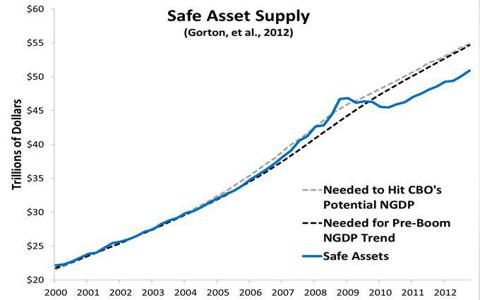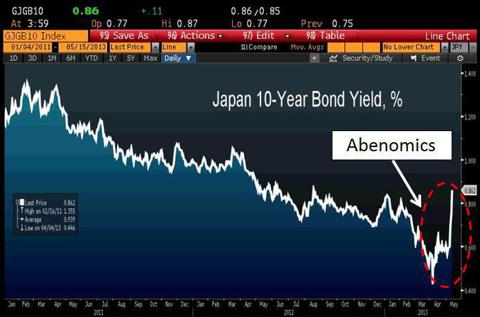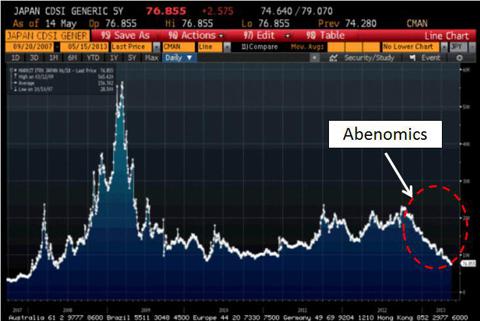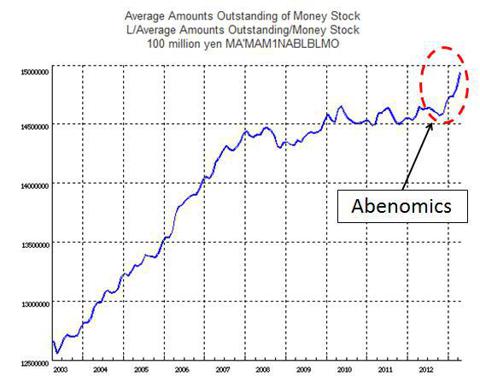Last week was a great week to be a dividend investor. Not only did two of my top stocks declare fresh dividends, but both companies also raised those payouts. The ability to enjoy a rising dividend is one reason why I much prefer the income from my dividend stocks than the fixed rate I could be earning on a bond.
But not all dividend-paying stocks are equal. Some companies pay unsustainably high dividends, which is why it is important to double check the company's ability to actually pay its dividend, even if a raise would suggest investors have nothing to fear. With that in mind, let's drill down a bit deeper into the two companies that just gave me a raise.
A gushing of income growth
Oil and gas production company, ConocoPhillips (NYSE: COP ) , announced that it was providing investors with a 4.5% raise this week. The company's CEO, Ryan Lance, pointed out that "[a] compelling dividend is a key part of our offering to shareholders and this increase is aligned with our commitment to target consistent dividend growth over time." This is actually the first raise investors have seen in a while because the company has been in the process of a major three-year repositioning program in which it shed billions of dollars in assets, including its refining arm Phillips 66 (NYSE: PSX ) .
10 Best Growth Stocks To Invest In 2014: MEDIFAST INC(MED)
Medifast, Inc., through its subsidiaries, engages in the production, distribution, and sale of weight management and disease management products, and other consumable health and diet products in the United States. The company?s product lines include weight and disease management, meal replacement, and vitamins. It also operates weight control centers that offer Medifast programs for weight loss and maintenance, customized patient counseling, and inbody composition analysis. The company markets its products under the Medifast and Essential brand names, including shakes, appetite suppression shakes, women?s health shakes, diabetics shakes, joint health shakes, coronary health shakes, calorie burn drinks, calorie burn flavor infusers, antioxidant shakes, antioxidant flavor infusers, bars, crunch bars, soups, chili, oatmeal, pudding, scrambled eggs, hot cocoa, cappuccino, chai latte, iced teas, fruit drinks, pretzels, puffs, brownie, pancakes, soy crisps, crackers, and omega 3 and digestive health products. Medifast Inc. sells its products through various channels of distribution comprising Web, call center, independent health advisors, medical professionals, weight loss clinics, and direct consumer marketing supported via the phone and the Web; Take Shape for Life, a physician led network of independent health coaches; and weight control centers. The company was founded in 1980 and is headquartered in Owings Mills, Maryland.
Advisors' Opinion: 10 Best Growth Stocks To Invest In 2014: Nordstrom Inc.(JWN)
Nordstrom, Inc., a fashion specialty retailer, offers apparel, shoes, cosmetics, and accessories for women, men, and children in the United States. It offers a selection of brand name and private label merchandise. The company sells its products through various channels, including Nordstrom full-line stores, off-price Nordstrom Rack stores, Jeffrey? boutiques, treasure & bond, and Last Chance clearance stores; and its online store, nordstrom.com, as well as through catalog. Nordstrom also provides a private label card, two Nordstrom VISA credit cards, and a debit card for Nordstrom purchases. The company?s credit and debit cards feature a shopping-based loyalty program. As of September 30, 2011, it operated 222 stores, including 117 full-line stores, 101 Nordstrom Racks, 2 Jeffrey boutiques, 1 treasure & bond store, and 1 clearance store in 30 states. The company was founded in 1901 and is based in Seattle, Washington.
Advisors' Opinion: - [By Kevin1977]
Director of Nordstrom Inc., Felicia D Thornton, bought 1,140 shares on 9/09/2011 at an average price of $47.89. Nordstrom, Inc. is one of the nation's fashion specialty retailers, with stores located in a number of states, including full-line stores, Nordstrom Racks, Faconnable boutiques, and free-standing shoe stores. Nordstrom Inc. has a market cap of $10.44 billion; its shares were traded at around $47.89 with a P/E ratio of 15.7 and P/S ratio of 1.1. The dividend yield of Nordstrom Inc. stocks is 2% Nordstrom Inc. had an annual average earnings growth of 27.3% over the past 10 years. GuruFocus rated Nordstrom Inc. the business predictability rank of 3.5-star.
On August 11, Nordstrom Inc. reported net earnings of $175 million, or $0.80 per diluted share, for the second quarter ended July 30, 2011. This represented an increase of 20 percent compared with net earnings of $146 million, or $0.66 per diluted share, for the same quarter last year.Second quarter same-store sales increased 7.3 percent compared with the same period in fiscal 2010. Net sales in the second quarter were $2.72 billion, an increase of 12.4 percent compared with net sales of $2.42 billion during the same period in fiscal 2010.
Last week, Director Felicia D Thornton bought 1,140 shares of JWN stock.
Executive Vice President Ken Worzel and Director Philip G Satre bought shares in August.
Checkpoint Systems, Inc. manufactures and markets identification, tracking, security, and merchandising solutions for the retail and apparel industry worldwide. The company operates in three segments: Shrink Management Solutions, Apparel Labeling Solutions, and Retail Merchandising Solutions. The Shrink Management Solutions segment provides shrink management and merchandise visibility solutions. It offers electronic article surveillance systems, such as EVOLVE, a suite of RF and RFID-enabled products that act as a deterrent to prevent merchandise theft in retail stores; and electronic article surveillance consumables, including EAS-RF and EAS-EM labels that work in combination with EAS systems to reduce merchandise theft in retail stores. This segment also provides keepers, spider wraps, bottle security, and hard tags, as well as Showsafe, a line alarm system for protecting display merchandise. In addition, it offers physical and electronic store monitoring solutions, incl uding fire alarms, intrusion alarms, and digital video recording systems for retail environments; and RFID tags and labels. The Apparel Labeling Solutions segment provides apparel labeling solutions to apparel retailers, brand owners, and manufacturers. It has Web-enabled apparel labeling solutions platform and network of 28 service bureaus located in 22 countries that supplies customers with customized apparel tags and labels. The Retail Merchandising Solutions segment offers hand-held label applicators and tags, promotional displays, and queuing systems. The company serves retailers in the supermarket, drug store, hypermarket, and mass merchandiser markets through direct distribution and reseller channels. Checkpoint Systems was founded in 1969 and is based in Thorofare, New Jersey.
Advisors' Opinion: - [By Michael]
OK, so Checkpoint (CKP: 13.80 0.00%) probably isn’t going to see its stock price double in 2011. However, the stock gained 35% in 2010 with earnings expected to climb 13%. Next year, Wall Street sees earnings growth accelerating to 25%. Despite the impressive growth rate, the stock trades at only 16x next year’s earnings estimates and analysts have a $25 price target for CKP.
10 Best Growth Stocks To Invest In 2014: Intuitive Surgical Inc.(ISRG)
Intuitive Surgical, Inc. designs, manufactures, and markets da Vinci surgical systems for various surgical procedures, including urologic, gynecologic, cardiothoracic, general, and head and neck surgeries. Its da Vinci surgical system consists of a surgeon?s console or consoles, a patient-side cart, a 3-D vision system, and proprietary ?wristed? instruments. The company?s da Vinci surgical system translates the surgeon?s natural hand movements on instrument controls at the console into corresponding micro-movements of instruments positioned inside the patient through small puncture incisions, or ports. It also manufactures a range of EndoWrist instruments, which incorporate wrist joints for natural dexterity for various surgical procedures. Its EndoWrist instruments consist of forceps, scissors, electrocautery, scalpels, and other surgical tools. In addition, it sells various vision and accessory products for use in conjunction with the da Vinci Surgical System as surgical procedures are performed. The company?s accessory products include sterile drapes used to ensure a sterile field during surgery; vision products, such as replacement 3-D stereo endoscopes, camera heads, light guides, and other items. It markets its products through sales representatives in the United States, and through sales representatives and distributors in international markets. The company was founded in 1995 and is headquartered in Sunnyvale, California.
Advisors' Opinion: - [By Jim Lowell]
Intuitive Surgical (ISRG: 329.49 0.00%) is an expensive stock and their stock price is currently well below the $400 level that it flirted with in April. However, the stock is a compelling growth story with revenues and earnings expected to climb 19% in 2011. The company faces little competitive pressure and 2011 is likely the year that consumers opt for procedures that they delayed in 2009-10. That could produce some blowout earnings results for ISRG in 2011.
10 Best Growth Stocks To Invest In 2014: TrueBlue Inc.(TBI)
TrueBlue, Inc. provides temporary blue-collar staffing services in the United States. It supplies on demand general labor to various industries under the Labor Ready brand; skilled labor to manufacturing and logistics industries under the Spartan Staffing brand; and trades people for commercial, industrial, and residential construction, and building and plant maintenance industries under the CLP Resources brand. The company also provides mechanics and technicians to the aviation maintenance, repair and overhaul, aerospace manufacturing, and assembly industries, as well as to other transportation industries under the Plane Techs brand; and temporary drivers to the transportation and distribution industries under the Centerline brand. It primarily serves small and medium-size businesses. The company was formerly known as Labor Ready, Inc. and changed its name to TrueBlue, Inc. in December 2007. TrueBlue, Inc. was founded in 1985 and is headquartered in Tacoma, Washington.
Advisors' Opinion: - [By McWillams]
TrueBlue, Inc. is a provider of temporary blue-collar staffing. Its EPS forecast for the current year is 0.69 and next year is 1.1. According to consensus estimates, its topline is expected to grow 8.96% current year and 10.03% next year. It is trading at a forward P/E of 15.76. Out of 10 analysts covering the company, six are positive and have buy recommendations and four have hold ratings.
10 Best Growth Stocks To Invest In 2014: Buffalo Wild Wings Inc.(BWLD)
Buffalo Wild Wings, Inc. engages in the ownership, operation, and franchise of restaurants in the United States. The company provides quick casual and casual dining services, as well as serves bottled beers, wines, and liquor. As of July 26, 2011, it had 773 Buffalo Wild Wings locations in 45 states in the United States, as well as in Canada. The company was founded in 1982 and is headquartered in Minneapolis, Minnesota.
Advisors' Opinion: - [By Fabian]
While Chipotle has captured most of the attention among the restaurant stocks, Buffalo Wild Wings (BWLD: 56.62 0.00%) could be 2011’s big winner. Wall Street is expecting 19% earnings growth from Buffalo Wild Wings in 2011 which is only slightly lower than Chipotle’s 20% growth rate. However, BWLD trades at only 18x consensus 2011 estimates while CMG trades at a pricey 40x. On an EBITDA basis, Chipotle trades at over 20x, while Buffalo Wild Wings trades at less than 9x.
10 Best Growth Stocks To Invest In 2014: Waste Management Inc.(WM)
Waste Management, Inc., through its subsidiaries, provides waste management services to residential, commercial, industrial, and municipal customers in North America. It offers collection, transfer, recycling, and disposal services. The company also owns, develops, and operates waste-to-energy and landfill gas-to-energy facilities in the United States. Its collection services involves in picking up and transporting waste and recyclable materials from where it was generated to a transfer station, material recovery facility, or disposal site; and recycling operations include collection and materials processing, plastics materials recycling, and commodities recycling. In addition, it provides recycling brokerage, which includes managing the marketing of recyclable materials for third parties; and electronic recycling services, such as collection, sorting, and disassembling of discarded computers, communications equipment, and other electronic equipment. Further, the company e ngages in renting and servicing portable restroom facilities to municipalities and commercial customers under the Port-o-Let name; and involves in landfill gas-to-energy operations comprising recovering and processing the methane gas produced naturally by landfills into a renewable energy source, as well as provides street and parking lot sweeping services. Additionally, it offers portable self-storage, fluorescent lamp recycling, and medical waste services for healthcare facilities, pharmacies, and individuals, as well as provides services on behalf of third parties to construct waste facilities. The company was formerly known as USA Waste Services, Inc. and changed its name to Waste Management, Inc. in 1998. Waste Management, Inc. was incorporated in 1987 and is based in Houston, Texas.
Advisors' Opinion: - [By Tom Konrad]
The only household name in this year's list, Waste Management is coming back for an encore performance in 2013. WM is the North American leader in recycling and renewable biogas among waste and environmental services companies. The industry has been in a cyclical downturn, and WM's well-covered 4.2% dividend makes it a solid anchor for this portfolio of small and micro-cap clean energy stocks.
- [By Sam Collins]
Houston-based Waste Management Inc. (NYSE: WM) is the largest trash hauling/disposal company in the United States. This company is a model for steady growth with earnings increasing steadily over many years.?
S&P has a “four-star buy” on WM with a 12-month target of $42. WM pays an annual dividend of $1.36 for a yield of 3.7%.?
Technically, the stock is in a powerful bull channel with support at $36 and resistance at $39. Buy WM as a long-term growth opportunity.
10 Best Growth Stocks To Invest In 2014: Sara Lee Corporation(SLE)
Sara Lee Corporation engages in the manufacture and marketing of a range of branded packaged meat, bakery, and beverage products worldwide. Its packaged meat products include hot dogs and corn dogs, breakfast sausages, sandwiches and bowls, smoked and dinner sausages, premium deli and luncheon meats, bacon, beef, turkey, and cooked ham. It also offers frozen baked products, which comprise frozen pies, cakes, cheesecakes, pastries, and other desserts. In addition, Sara Lee provides roast, ground, and liquid coffee; cappuccinos; lattes; and hot and iced teas, as well as refrigerated dough products. The company sells its products under Hillshire Farm, Ball Park, Jimmy Dean, Sara Lee, State Fair, Douwe Egberts, Senseo, Maison du Caf Advisors' Opinion:
- [By Carlson]
Director of Sara Lee Corp., James S Crown, bought 37,500 shares on 9/12/2011 at an average price of $17.5. Sara Lee Corporation is a global manufacturer and marketer of high-quality, brand-name products for consumers throughout the world. Sara Lee Corp. has a market cap of $10.24 billion; its shares were traded at around $17.5 with a P/E ratio of 19.9 and P/S ratio of 1.2. The dividend yield of Sara Lee Corp. stocks is 2.7%.
On August 11, Sara Lee Corp. reported earnings for the fourth quarter 2011. The fourth quarter included an 8% increase in adjusted net sales from continuing operations to $2.3 billion; 9% reported net sales increase, 40% increase in adjusted operating income to $189 million; and reported operating income increase of 19%.
Last week, Director James S Crown bought 37,500 shares of SLE stock. Executive Chairman Jan Bennink bought 58,400 shares in August.
10 Best Growth Stocks To Invest In 2014: Eastern Insurance Holdings Inc.(EIHI)
Eastern Insurance Holdings, Inc., through its subsidiaries, provides workers compensation insurance and reinsurance products in the United States. The company?s Workers Compensation Insurance segment provides traditional workers compensation insurance coverage products, including guaranteed cost policies, policyholder dividend policies, retrospectively-rated policies, deductible policies, and alternative market products to employers. This segment distributes its workers? compensation products and services through its independent insurance agents primarily in Pennsylvania, Delaware, North Carolina, Maryland, Indiana, and Virginia. Its Segregated Portfolio Cell Reinsurance segment offers alternative market workers compensation solutions comprising program design, fronting, claims administration, risk management, segregated portfolio cell rental, asset management, and segregated portfolio management services to individual companies, groups, and associations. Eastern Insurance Holdings, Inc. is headquartered in Lancaster, Pennsylvania.
10 Best Growth Stocks To Invest In 2014: Thoratec Corporation(THOR)
Thoratec Corporation engages in the development, manufacture, and marketing of proprietary medical devices used for circulatory support. The company?s primary product lines include ventricular assist devices, such as HeartMate II, an implantable left ventricular assist device consisting of a rotary blood pump to provide intermediate and long-term mechanical circulatory support (MCS); and HeartMate XVE, an implantable and pulsatile left ventricular assist device for intermediate and longer-term MCS. Its ventricular assist devices also comprise Paracorporeal Ventricular Assist Device, an external pulsatile ventricular assist device, which provides left, right, and biventricular MCS approved for bridge-to-transplantation (BTT), including home discharge, and post-cardiotomy myocardial recovery; and Implantable Ventricular Assist Device, an implantable and pulsatile ventricular assist device designed to provide left, right, and biventricular MCS approved for BTT comprising hom e discharge, and post-cardiotomy myocardial recovery. The company also provides CentriMag, an extracorporeal full-flow acute surgical support platform that offers support up to 30 days for cardiac and respiratory failure. In addition, it offers PediMag and PediVAS extracorporeal full-flow acute surgical support platforms designed to provide acute surgical support to pediatric patients. The company sells its products through direct sales force in the United States, as well as through a network of distributors internationally. Thoratec Corporation was founded in 1976 and is headquartered in Pleasanton, California.
Advisors' Opinion:






